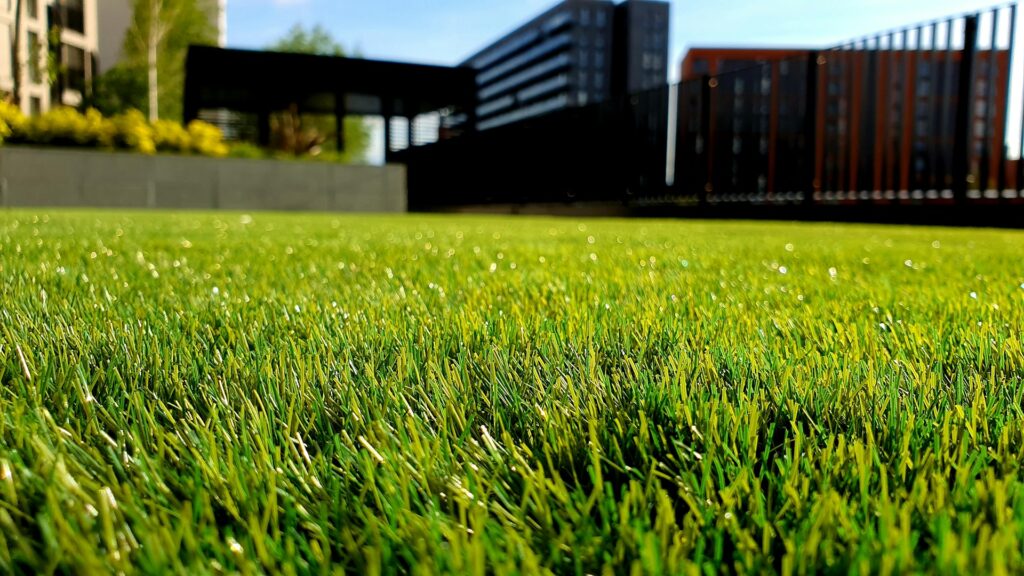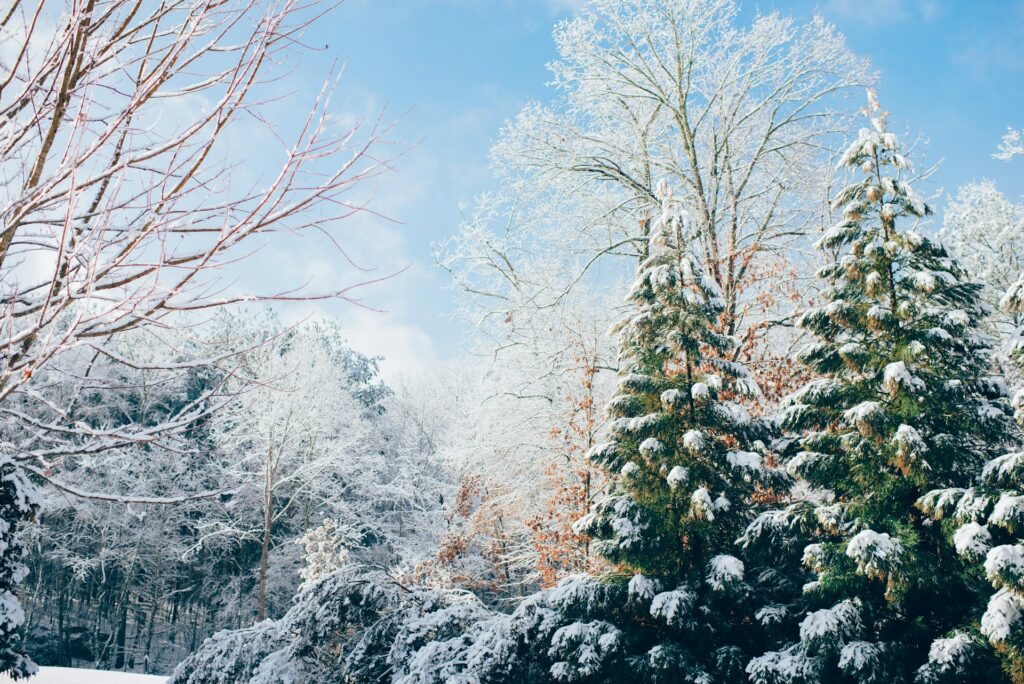
We are reader-supported. When you buy through links on our site, we may earn an affiliate commission.
Many plants require full sunlight to blossom and reach their full potential. However, various kinds thrive in full and partial shade. Look no further if you’re looking for greeneries that can flourish even with minimal natural light. Make a space in the shady patches of your landscape for these beauties and add visual interest to your home throughout the year. Here’s your list of evergreen plants.
1. English Ivy
English Ivy or Hedera helix is a perennial evergreen plant for shade, returning every year once you plant it. It’s classified as a foliage plant or woody vine that impressively grows in sheltered areas. Shockingly, it can climb up to 80 feet and become invasive. You may need to trim excess growth to maintain it neatly. A stunner for its fine-textured and vibrant green leaves, caring for this plant is easy and doesn’t take much of your time. It can tolerate indirect sunlight, but it can also benefit from direct light once in a while.
2. Climbing Hydrangeas
Climbing hydrangeas are some of the most beautiful evergreen plants for shade. The three types — Miranda, Silver Lining and Firefly — thrive in warm spots with moist ground and a pH between 6.0 and 6.5. They can grow beautifully in most soil types but prefer damp, well-drained soil. It can take a few years for hydrangeas to develop their pretty white flowers — but once they do, they add a different level of aesthetic to your home.
Climbing hydrangeas do best when you plant them in spring or fall when the soil is warm so prepare your garden in the winter to plant them in the next season for optimal results. Hydrangeas like a nice mixture of sunny and shady spots, so station them in any sheltered site away from any door or window blasting hot or cold air.
3. Rhododendron Species
Rhododendrons have over 1200 different natural species and many of these are evergreen plants that can grow under a shadow. An example is azaleas which have a semi-hardwood stem cutting that can be propagated and replanted in early fall.
Another stunning species is rhododendron catawbiense, an evergreen shrub bearing exquisite flowers that turn heads. These flowers attract hummingbirds with their gorgeous red, lavender and white hues. Rhododendron bushes have a deep green and leathery foliage reaching a height of up to 10 feet and can spread up to 8 feet, perfect for exteriors or interiors with natural themes. If you choose to add this, ask the local nursery if they’re the kinds that grow under a shade.
4. Tree Peonies
Tree peonies are native to China and were valued for their medicinal properties. They have significant and gorgeous flowers, ranging from white, yellow, dark maroon, magenta and pink. These bloom in early summer or late spring and do well in adequately drained soil.
Bearing longer stems, these tree peonies grow up to 5 feet tall, but selected variations can stretch up to 7 feet, flourishing to brighten up your landscape. They prefer light shade, as too much sun can scorch and fade the flowers. Like the English Ivy, tree peonies are perennials that return yearly.
5. Mountain Laurel
Mountain laurel or kalmia latifolia is a native North American shrub that’s shade tolerant and provides dark green foliage throughout the year, even after its flowers have vacated the branches. It can sprout in deep shade but prefers partial sunlight, preferably in a spot with half access to natural rays.
This shrub produces the most pollinated and vibrant flowers that bloom in late spring, ranging from a deep rose to white colors, mottled with deep hues of mahogany or purple dots or streaks. But its attraction doesn’t end with these hexagonal-shaped flowers. The shiny, vibrant green leaves are an all-year-round natural art your eyes can enjoy.
6. Coral Bells
Coral bells come in hundreds of varieties spanning a wide breadth of colors, such as lime, dark green, plum, burgundy, silver, gold and brown. The flowers of these partial evergreen plants generally come into view in spring and summer. Their nectar is very appealing to hummingbirds, so grow these where you can see them from inside or place a cute bench nearby.
With this many varieties, not all prefer the same growing conditions, but most will do well in partial shade to complete shade. Full sun can bleach the amazing colors from the evergreen foliage.
7. Lungwort
Lungwort is one of the best evergreen perennials for shade — it can survive where most plants wouldn’t. The leaves are dark green speckled with interesting white spots, making the whole plant look as though someone splashed it with bleach. You’ll also notice a delicate fuzzy covering over the leaves.
The flowers on the lungwort plant are remarkable. They bloom in early spring and come in white, pink and blue. Multiple colors may appear on the same plant and each bloom can change tones as it ages.
8. Lenten Rose
Its name is quite deceiving — the lenten rose isn’t a rose at all. Rather, it belongs to the buttercup family. It flowers in late winter around the Christian season of Lent, giving this plant the rest of its title.
The blooms come in white to light pink and purple shades and grow to a few inches. The foliage ranges in the depth of color and texture based on the variety. One thing to bear in mind is that while these plants are beautiful and easy to care for, they’re also toxic to humans and pets.
9. European Ginger
This verdant ground cover is a cousin of the Canadian wild ginger — so named because it was used as a ginger substitute at one point in history. European ginger is about as easy as it comes. It prefers shade and doesn’t require much care. It’s also resistant to most pests, including deer, but draws butterflies.
European ginger has lovely deep green leaves all year. It grows to around 6–12 inches, with its heart-shaped, glossy leaves spanning up to a few inches. In the late spring and early summer, you may find small bell-shaped blooms. However, they’re difficult to spot under the large, thick leaves.
10. Foamflower
Foamflower is a wildflower with showy white and pink-tinged blooms. It does well in full shade, but its colors get brighter with a few hours of dappled sunlight. The flowers bloom in late spring and early summer on stems reaching near a foot — though the base of the plant remains much shorter.
As if this gem isn’t beautiful enough in the heat, you’re in for a surprise when the weather turns cool. The leaves turn stunning fall shades of bronze and burgundy.
Consider Your Plant Hardiness Zone
You know you want to add evergreen perennials for shade to your landscaping design, but you have one last consideration to bear in mind. What plant hardiness zone do you live in? Plants aren’t designed to thrive in every climate.
Your local nursery should only carry suitable plants for your area. However, if you still are uncertain, talk to one of the specialists and ask for their recommendations. You need plants that fit your wants and your landscape’s needs.
Original Publish Date 2/21/2023 — Updated 1/25/2024










